#Lithium Trolling Motor Batteries
Text
Learn Some Hidden Facts About The Lithium RV Battery
In fields reliant on sturdy machinery and journeys into uncharted territories, the choice of battery technology holds significant sway over effectiveness and convenience. Are you someone willing to know more facts about the forklift lithium battery? If Yes. This writing piece is the best place where people can know more about it.
Forklift Lithium Battery
Within industrial landscapes where operational efficiency reigns supreme, forklifts stand as indispensable assets. While traditional lead-acid batteries have been prevalent, the introduction of forklift lithium battery has revolutionized operations.
Forklift lithium battery deliver steady power output throughout work shifts, devoid of the voltage fluctuations seen in lead-acid batteries. This ensures uninterrupted operations, maximizing productivity. In contrast to lead-acid batteries, which require prolonged recharging intervals, lithium batteries can be swiftly recharged during breaks or shift changes, minimizing downtime and streamlining workflow.
Lithium RV battery flaunts a prolonged service life as compared to their lead-acid counterparts, lessening the requirement for frequent replacements and reducing the overall cost of ownership. For adventurers seeking freedom on the open road, reliable power is paramount. The lithium RV battery is popular for many hidden reasons. It is known for its durability and effortless features that you must explore.
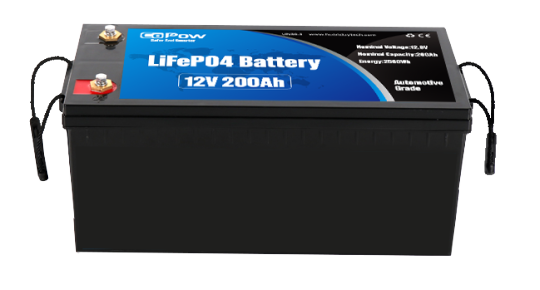
Lithium RV battery provide greater energy density than traditional lead-acid batteries, delivering more power in a smaller, lighter package. Lithium RV batteries boast a longer lifespan than lead-acid batteries, lasting up to ten times longer with proper care. This translates to fewer battery replacements and greater confidence during extended journeys.
Lithium batteries can be charged rapidly using compatible chargers, allowing RVers to spend less time waiting and more time exploring their surroundings. Whether in industrial environments or on recreational excursions, lithium batteries offer unparalleled performance, efficiency, and convenience. With advancing technology, the adoption of lithium batteries for forklifts and RVs is poised to increase, ushering in a new era of reliability and power.
0 notes
Text
The Power of 12V 50Ah LiFePO4 Batteries: Energy for the Future
In today's world, energy storage solutions are becoming increasingly vital as we strive for sustainability and energy independence. One technology that has emerged as a frontrunner in this field is the 12v 50ah lifepo4 battery. This article explores the remarkable potential of LiFePO4 batteries, focusing on their technical specifications, applications, and the environmental benefits they offer.
Understanding LiFePO4 Batteries
LiFePO4, which stands for Lithium Iron Phosphate, is a type of lithium-ion battery known for its exceptional energy density and safety features. LiFePO4 batteries are composed of lithium iron phosphate as the cathode material, making them a superior choice for a range of applications. The 12V 50Ah LiFePO4 battery represents a specific configuration with a voltage of 12 volts and a capacity of 50 ampere-hours.
Technical Advantages
High Energy Density: LiFePO4 batteries are known for their high energy density, meaning they can store a substantial amount of energy in a compact and lightweight design. This is particularly important for applications where space is limited.
Long Cycle Life: LiFePO4 batteries have a significantly longer cycle life compared to other lithium-ion batteries, often exceeding 2000 charge-discharge cycles. This makes them a cost-effective and sustainable choice for long-term applications.
Fast Charging: LiFePO4 batteries can be charged at higher rates, making them suitable for applications that require rapid replenishment of energy.
Safety: LiFePO4 batteries are considered one of the safest lithium-ion battery chemistries. They are highly resistant to overheating and are less prone to thermal runaway, which can result in fires or explosions in other lithium-ion batteries.
Applications
Solar Power Storage: 12V 50Ah LiFePO4 batteries are frequently used in solar energy systems for residential and commercial applications. They can store excess solar energy during the day for use during the night or when sunlight is unavailable.
Electric Vehicles: LiFePO4 batteries are gaining traction in the electric vehicle (EV) industry. Their high energy density, long cycle life, and safety features make them a reliable choice for powering electric cars, bikes, and scooters.
Off-Grid Systems: Remote and off-grid locations often rely on LiFePO4 batteries for energy storage. These batteries can power telecommunications equipment, remote monitoring systems, and remote cabins, ensuring a consistent power supply.
Marine and RV Applications: 12V 50Ah LiFePO4 batteries are suitable for marine and RV applications due to their lightweight design and resistance to vibration and shock.
Emergency Backup Power: LiFePO4 batteries provide reliable backup power for critical systems, such as data centers, hospitals, and emergency lighting, ensuring uninterrupted operation during power outages.
Environmental Benefits
LiFePO4 batteries offer several environmental benefits:
Reduced Carbon Footprint: LiFePO4 batteries are energy-efficient and produce lower emissions during their lifecycle, contributing to a reduction in the carbon footprint.
Longer Lifespan: The extended cycle life of LiFePO4 batteries means fewer replacements and reduced waste, promoting sustainability.
Recyclability: LiFePO4 batteries are recyclable, allowing for the recovery of valuable materials and the reduction of electronic waste.
The 12V 50Ah LiFePO4 battery represents a powerful and sustainable energy storage solution with a wide range of applications. Its technical advantages, including high energy density, long cycle life, and safety features, make it a compelling choice for various industries and environments. Additionally, its positive environmental impact, from reduced emissions to recyclability, aligns with the global push for sustainable energy solutions. As we continue to pursue a greener and more energy-efficient future, LiFePO4 batteries are poised to play a pivotal role in powering our world.
For more details, visit us :
12v 50ah lithium battery for trolling motor
Lithium RV Batteries for home
SAE extension cable
lifepo4 battery 12v 100ah
0 notes
Text
How Long Will a 35Ah Battery Run a Trolling Motor?
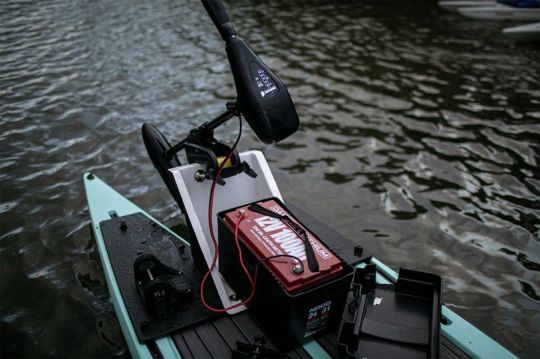
Trolling motors are the unsung heroes of every angler's boat, providing quiet and efficient propulsion for a day on the water. If you're a passionate fisherman, you know that the performance of your trolling motor heavily relies on the battery powering it. In this article, we'll dive deep into the world of trolling motor batteries, focusing on the 35Ah battery's capabilities and its endurance on the water.
As any seasoned angler will tell you, the longevity of your fishing expedition often hinges on the quality and capacity of your trolling motor battery. In this comprehensive guide, we'll explore the factors that determine how long a 35Ah battery can run a trolling motor.
Arrangement Trolling Motors
Before delving into battery specifics, it's essential to grasp the fundamentals of trolling motors. These devices are electric or battery-powered and serve as auxiliary propulsion for boats, allowing anglers to move quietly and efficiently through the water. Trolling motors are indispensable for precise positioning and maneuvering while fishing.
Types of Trolling Motor Batteries
When it comes to powering your trolling motor, you have two primary options: lead-acid and lithium-ion batteries. Each has its pros and cons, and the choice greatly affects your motor's performance.
The Power of a 35Ah Battery
A 35Ah battery refers to a 35 Ampere-hour battery, which signifies its capacity to supply a consistent current of 1 Ampere for 35 hours. But how does this capacity translate to trolling motor use, and is it sufficient for your needs?
Factors Affecting Battery Run Time
To determine how long a 35Ah battery can run a trolling motor, you need to consider various factors, such as the motor's thrust, speed settings, and voltage requirements.
Dakota Lithium Batteries
Dakota Lithium batteries have gained a reputation for their exceptional performance in the fishing world. We'll explore how these batteries have become a game-changer for anglers.
Deep Cycle Batteries
Deep cycle batteries are often the preferred choice for trolling motors due to their ability to withstand repeated charging and discharging cycles. We'll discuss why they are ideal for this purpose.
Choosing the Right Battery
Selecting the right battery for your trolling motor is crucial. Compatibility with your motor and proper maintenance play a significant role in battery life.
Calculating Battery Run Time
Understanding how to calculate battery run-time based on Ampere-hours is essential for planning your fishing trips effectively.
Practical Tips for Prolonging Battery Life
We'll provide you with practical tips on how to extend the life of your trolling motor battery, including proper charging and storage techniques.
Real-World Scenarios
We'll examine real-world case studies and examples to give you a practical understanding of how long a 35Ah battery can run a trolling motor in different situations.
The 12V Battery Dilemma
Is a 35Ah battery enough for your trolling motor, especially if it requires a 12V power source? We'll address this common dilemma and provide insights.
Bursting the Myths
There are several misconceptions and myths surrounding trolling motor batteries. We'll debunk some of these to ensure you have accurate information.
Pros and Cons
Weighing the pros and cons of various trolling motor battery options, including 35Ah batteries, will help you make an informed decision.
Conclusion
In conclusion, the longevity of a 35Ah battery's performance on a trolling motor depends on several factors. By understanding these factors and making informed choices, you can ensure a long and productive day on the water.
FAQs
Can I use a 35Ah battery for my 12V trolling motor?
We address this common question in detail in this article, so be sure to check it out.
How do Dakota Lithium batteries differ from traditional ones?
We explore the unique features of Dakota Lithium batteries and their advantages.
What should I do to maintain my trolling motor battery?
We offer practical tips for maintaining your battery's health and performance.
Can a 35Ah battery run a trolling motor at top speed?
We'll discuss the impact of speed settings on battery run time.
Are there any specific brands known for their high-quality trolling motor batteries?
We'll mention some reputable brands in the article helping you make an informed choice.
0 notes
Text
The Pros and Cons of Using Lifepo4 Batteries for Your Trolling Motor
Are you looking for a battery for your trolling motor? If so, you may wonder if a Lifepo4 battery is a good option. Here, we'll look at the pros and cons of using Lifepo4 batteries for trolling motors.
The Pros and Cons of Using Lifepo4 Batteries for Your Trolling Motor
The Pros and Cons of Using lifepo4 battery for Your Trolling Motor
When it comes to trolling motors, you can choose from a few different battery types. One of the newer options on the market is the Lifepo4 battery. In this article, we will look at the pros and cons of using Lifepo4 batteries for your trolling motor.
Lifepo4 batteries are a type of lithium-ion battery. They're becoming increasingly popular in various applications, including trolling motors. Lifepo4 batteries offer several advantages over other battery types, including:
1. They're lightweight.
2. They have a high energy density, meaning they can store more energy than other battery types.
3. They have a low self-discharge rate, meaning they lose less charge when unused.
4. They're environmentally friendly.
5. They have a long lifespan.
There are a few disadvantages to using Lifepo4 batteries, including:
1. They're more expensive than other battery types.
2. They require a special charger.
3. They're sensitive to temperature extremes.
4. They can be damaged if not used properly.
Overall, Lifepo4 batteries have a lot to offer. They're lightweight, high energy density, and environmentally friendly. However, they're also more expensive than other battery types and require a special charger.
The Pros of Using Lifepo4 Batteries for Your Trolling Motor
Are you in the market for a new trolling motor battery? If so, you may wonder if a Lifepo4 battery is the right choice. In this blog post, we'll look at the pros and cons of using a Lifepo4 battery for your trolling motor.
One of the biggest advantages of using a Lifepo4 battery is that it offers a longer lifespan than other types of batteries. A Lifepo4 battery can last up to four times longer than a traditional lead-acid battery. This means that you won't have to replace your battery as often, which can save you money in the long run.
Another advantage of using a Lifepo4 battery is that it's much lighter than a lead-acid battery. This can be a big advantage if you have a smaller trolling motor, as it will be easier to carry and transport.
Finally, Lifepo4 batteries are much more efficient than lead-acid batteries. This means that they'll be able to provide more power for longer periods of time.
Of course, there are also some disadvantages to using a Lifepo4 battery. One of the biggest is that they're more expensive than lead-acid batteries. However, if you take into account the fact that you'll be replacing your battery less often, the overall cost may be worth it.
Another disadvantage of using a Lifepo4 battery is that it requires special chargers. This can be an inconvenience, but it's something that you'll need to consider if you're planning on using this type of battery.
Overall, there are many advantages to using a Lifepo4 battery for your trolling motor. If you're looking for a battery that will last longer and be more efficient, a Lifepo4 may be the right choice for you.
The Cons of Using Lifepo4 Batteries for Your Trolling Motor
If you're thinking about using a Lifepo4 battery for your trolling motor, there are a few things you should know. Here are three potential cons of using these types of batteries:
1. They're More Expensive
Lifepo4 batteries are typically more expensive than traditional lead-acid batteries. This is because they're made with more expensive materials and have a longer lifespan. If you're on a budget, you may want to stick with a lead-acid battery.
2. They weigh more.
Lifepo4 batteries are also typically heavier than lead-acid batteries. This can be a problem if you're trying to save weight on your boat. If weight is not an issue, then this probably won't be a big deal to you.
3. They Require Special Chargers
You can't just use any old charger with a Lifepo4 battery. You need to make sure you're using a charger that's specifically designed for these types of batteries. Otherwise, you could damage the battery.
Overall, Lifepo4 golf cart batteries for sale have some potential drawbacks. However, they also offer some significant advantages. If you're considering using one for your trolling motor, weigh the pros and cons carefully to decide if it's the right choice for you.
The Bottom Line: Should You Use Lifepo4 Batteries for Your Trolling Motor?
If you're like most people, you've probably heard of lithium-ion batteries, but you may not be familiar with lithium iron phosphate batteries, also known as Lifepo4 batteries. These batteries are becoming increasingly popular in a variety of applications, including trolling motors. But what are the pros and cons of using these batteries for your trolling motor? Let's take a closer look. Lifepo4 batteries have a number of advantages over traditional lead-acid batteries. They are much lighter, so they are easier to transport and install. They also have a higher energy density, meaning they can store more power in a given space. And they have a longer lifespan, typically lasting up to twice as long as lead-acid batteries.
On the downside, Lifepo4 batteries are more expensive than lead-acid batteries. But, when you factor in the longer lifespan and increased performance, they may be worth the investment. So, should you use a Lifepo4 battery for your trolling motor? If you're looking for a lighter-weight, longer-lasting battery with increased performance, then the answer is probably yes. Just be prepared to spend a bit more upfront.
Conclusion
The trolling motor is a device that is used to propel a boat through the water. It is usually attached to the stern of the boat and is operated by a remote control. The trolling motor can be used to move the boat in any direction and can also be used to stop the boat. Most trolling motors are powered by lead-acid batteries, but some newer models are powered by lithium-ion batteries. Lithium-ion batteries are more expensive than lead-acid batteries, but they have several advantages. Lithium-ion batteries are lighter and more powerful, and they can be recharged more quickly. There are some disadvantages to using lithium-ion batteries, however. They can be damaged by overcharging, and they can catch fire if they are damaged. Lead-acid batteries are more durable and less likely to catch fire, but they are heavier and less powerful. If you are considering using a lithium-ion battery to power your trolling motor, you should weigh the pros and cons carefully. Lithium-ion batteries have some advantages, but they also have some significant disadvantages.
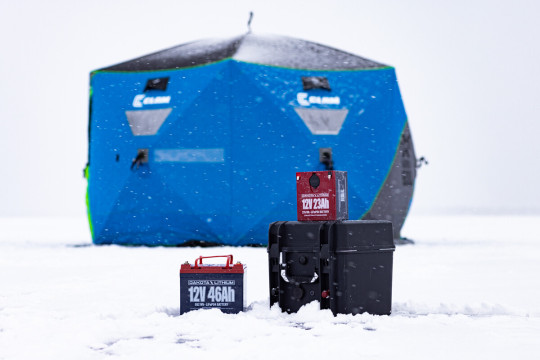
#lifepo4 battery#dakota lithium#marine battery#trolling motor#12v battery#battle born batteries#10 box
0 notes
Text
Lithium trolling motor batteries cost thousands of dollars. Read this blog before you make that purchase!
0 notes
Text
What is the LiFePO4 Battery?

Lithium ion batteries, in essence, are those that charge by moving ions between the negative and the positive sides. Lithium ions are the small red dots that appear inside the battery. They are known to move backwards and forwards to keep the system operating. We'll be exploring the workings of a LiFePO4 Battery in detail in this article. You can read on to learn more.
The left side contains a positive electrode made from LiFePO4. The full form is lithium-iron-phosphate. Additionally, iron ions and phosphate create a grid that traps ions.
Charging the Battery
The lithium ions are transferred from one electrode to the other during charging. This membrane is made with a specific kind of plastic called polymer. It has many tiny pores, making it easier for the ions of ions to pass through. The negative side of the lattice is composed of carbon atoms. They are capable of trapping ions and keeping them from moving to the other side.
Discharge the Battery
The battery does the exact same thing as when it is discharged, but in reverse. The lithium ions are made to move again when electrons flow over the negative electrode. They move through the membrane and return to the substance called iron-phosphate lactice. As long as the battery remains charged, they will be stored on the other end.
Movement of the Ions
Pay attention and you'll see that lithium ions are stored on the positive side, also known as an electrode. If the battery is fully charged, the lithium ions will be stored in the negative electrode carbon.
Construction Method
You should know that these units are made of thin layers copper foils, aluminum and polymer. The chemicals are layered on top of the layers. In most cases they are rolled as a jelly-roll, and stored in a canister of steel. The process is identical to that of an AA-battery.
Replace
This is how 12 volts lithium ion batteries are used in different devices. They get their power from a lot these cells. They can be connected in parallel and in series to increase their amp-hour capacities and voltage. Each cell can produce 3.3 volts. This means that if four of these cells are connected in series you will get 13.2 V total. These battery packs can be used to replace a 12V battery pack.
You can read this article to learn how a LiFePO4 cell works. These batteries can be purchased by custom-made ones. This article will hopefully help you understand the units.
0 notes
Text
Revolutionizing Watercraft: The Rise of Lithium Trolling Motor Batteries
Introduction:
The advent of lithium trolling motor batteries has marked a significant milestone in the evolution of recreational and professional fishing, offering unparalleled efficiency and performance on the water. These batteries provide a robust and reliable power source for trolling motors, fundamentally changing the angling experience by offering longer run times, reduced weight, and faster recharge capabilities. This article explores the benefits, applications, and key considerations of lithium trolling motor batteries, illuminating their impact on modern watercraft technology.

Benefits of Lithium Trolling Motor Batteries:
Extended Battery Life: Lithium batteries offer significantly longer life spans than traditional lead-acid batteries, ensuring years of reliable service.
Lightweight Design: They are much lighter, reducing the overall weight of the watercraft and improving maneuverability and speed.
Faster Recharge Times: With the ability to recharge much faster, anglers can spend less time waiting and more time on the water.
Consistent Power Delivery: Unlike other batteries, lithium trolling motor batteries maintain consistent power output until fully depleted, ensuring optimal performance throughout.
Eco-Friendly: With a lower environmental impact, these batteries are an excellent choice for eco-conscious anglers.
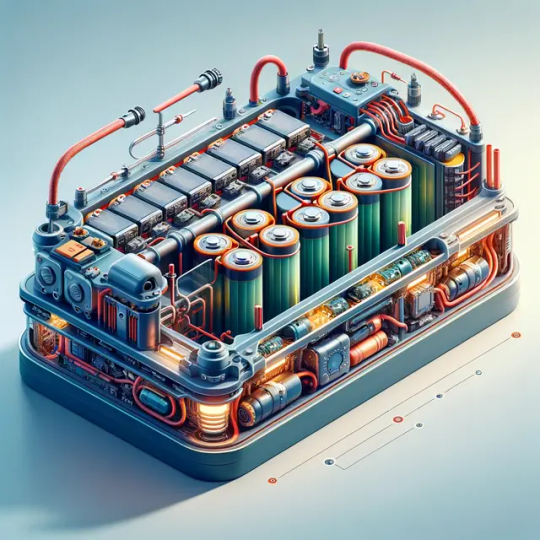
Applications of Lithium Trolling Motor Batteries:
Recreational Fishing: Ideal for small to medium-sized boats, enhancing the fishing experience with extended trips and minimal downtime.
Professional Angling: Provides the reliability and endurance needed for tournaments and long days on the water.
Kayak Fishing: Their lightweight nature makes them perfect for kayaks, offering power without compromising on space or weight.
Eco-Tours: Used in eco-friendly tours, they support sustainable practices in wildlife and nature exploration.
Choosing the Right Lithium Trolling Motor Battery:
Selecting the appropriate battery involves considering capacity, voltage, and compatibility with the trolling motor and watercraft. It's crucial to match the battery's specifications with the motor's requirements to ensure optimal performance and longevity. Additionally, investing in a quality charger designed for lithium batteries can extend their life and maintain their efficiency.
Conclusion:
Lithium trolling motor batteries are reshaping the future of fishing and boating, offering significant advantages over traditional power sources. With their lightweight design, faster charging, and longer lifespan, they provide anglers and boaters with a superior alternative that enhances their experience on the water. As technology advances, the adoption of lithium batteries in watercraft is set to grow, further revolutionizing the way we explore and interact with aquatic environments.
0 notes
Text
Mastering the Waters: Techniques and Tips from Bassmaster Pros | HugeCount
The roar of the trolling motor, the gentle hum of the fish finder, and the anticipation of a powerful tug on the line are the sounds of a booming bass fishing expedition. Whether you’re a seasoned angler or a novice just starting, mastering the waters requires skill, technique, and the right equipment. In this blog post, we’ll delve into the world of bass fishing, exploring essential techniques and tips from seasoned Bassmaster pros. We’ll also discuss the importance of trolling motors and deep cycle batteries, particularly Dakota Lithium Batteries, in powering your bass fishing adventures. Essential Techniques for Bass Fishing […]
Source: https://hugecount.com/business/mastering-the-waters-techniques-and-tips-from-bassmaster-pros/
0 notes
Text
5 Simple Techniques For NMC Battery
A small flash stage usually means a ternary lithium battery will quickly catch hearth if heated or struck. Consequently, although employing Is Ternary lithium battery safe? NMC vs LiFePO4 Battery , remember to be certain that It's not at all subjected to any placing or heating.
Under is the fabric share for your reference, different mobile kinds from various manufacturers is going to be somewhat distinctive.
Even though you'll find various possibilities in existence, from marine batteries for trolling motors to the electric trolling motor battery, locating the appropriate you can be a daunting task. However, with a bit of steering, you’ll be set with a easy training course very quickly.
They also have an extended lifespan than other kinds of lithium-ion batteries and might be discharge/recharged much more times in advance of dropping their ability.
I don’t feel the boat inside drops to People lows, but likely near to them. Very little is linked in storage manner. Am I harming them with these reduced temps? Need to I consider a warmth source (holding tank warmth pads)?
It appears not able to operate your 1.4kW motor and DO make sure to get a defense circuit board in your LiFePO4 pack.
Sol-gel techniques are another prevalent NMC synthesis approach. In this technique, changeover metal precursors are dissolved in a nitrate or acetate Answer, then coupled with a lithium nitrate or lithium acetate and citric acid Remedy.
LiFePO4 batteries are by now a boon to our planet mainly because they’re rechargeable. But their eco-friendliness doesn’t halt there. Compared with lead acid and nickel oxide lithium batteries, These are non-harmful and received’t leak.
As we said before, Tesla cars use ternary lithium batteries within their cars. That begs the big concern, why are these batteries so great?
The purpose of combining The 2 sorts is to boost the overall parameters of your battery. The NCM cells are known for their significant energy density, although the LFP could be the least high-priced.
No downtime and rapidly charging make lithium iron phosphate more efficient and Safe and sound to employ. These batteries can deliver a substantial discharge pulse rate in a brief time and also have frequent discharge voltage. The chemical and thermal balance make lithium iron phosphate batteries far more trusted and Risk-free.
Appropriate with photo voltaic charging: This sort of battery is highly appropriate with photo voltaic storage techniques, crafted and designed for quick plug-in installation with photo voltaic panels.
On the contrary, the security of NMC batteries is way even worse, Specially less than abnormally substantial temperatures, the possibility of hearth and explosion is fairly substantial, that is also among the reasons for your criticism of NMC batteries.
LFP batteries use phosphate like a cathode materials. A significant factor which makes LFP stick out is its extended-lifestyle cycle. Quite a few makers offer you LFP batteries with a life of ten years. Frequently witnessed being a more sensible choice for “stationery” programs, including battery storage or cellphones.
0 notes
Text
Lifepo4 Battery 12V 100ah And Its Hidden Benefits
Ready to enhance your RV adventures? Meet the lithium RV battery, specifically the LiFePO4 (Lithium Iron Phosphate) 12V 100Ah model, reshaping how we power recreational vehicles. Let's delve into why this state-of-the-art energy solution is transforming travel and camping experiences. Are you curious or want to know or learn more about impeccable and durable batteries? If Yes. This is the best writing piece where you can learn or explore more about the benefits or advantages of batteries.
Extended Lifespan
Traditional lead-acid batteries often require frequent replacements, but LiFePO4 batteries offer an impressive lifespan of over a decade, ensuring reliable power for countless journeys without the hassle of frequent changes. For RV enthusiasts aiming to optimize fuel efficiency and cargo capacity, lithium batteries are significantly lighter than lead-acid ones, reducing overall vehicle weight and improving handling.
Time efficiency matters, especially during travel. Lithium RV batteries charge much faster than conventional options, minimizing downtime and maximizing enjoyment on the road. LiFePO4 battery 12v 100ah can handle deeper discharge cycles compared to lead-acid alternatives, ensuring consistent performance and dependable power, even during prolonged off-grid adventures. Despite their compact size, lithium batteries offer remarkable energy density, providing more usable capacity within a smaller footprint, and freeing up space in the RV for other essentials.
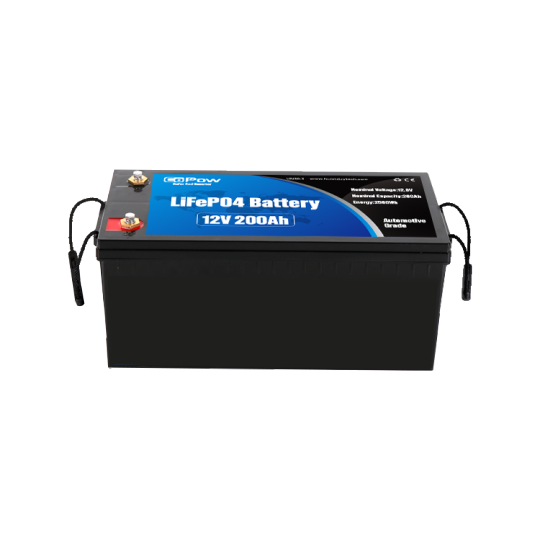
Say goodbye to regular battery upkeep. Lithium RV batteries require minimal maintenance, eliminating the need for watering, equalization charges, and other time-consuming tasks associated with traditional batteries. Whether facing extreme heat or cold, lithium RV batteries maintain consistent performance across a wide range of temperatures, ensuring reliable power delivery in any environment.
The transitioning to a lithium RV battery, particularly the LiFePO4 battery 12V 100Ah variant, brings numerous benefits that elevate the RV lifestyle. From extended lifespan and lightweight design to rapid charging and temperature resilience, these advanced batteries empower adventurers to explore further, stay longer, and embrace off-grid living with ease. Experience the future of RV power with lithium technology today.
0 notes
Text
https://www.poweroad.com/product/esbox-3000-mini-home-energy-system/
home bess

clithium-ion batteries powering a long list of applications from daily activities to crucial power support by drop-in replacement or custom solutions. Our products mainlyinclude residential lifepo4 battery, lithium trolling motor battery 36v, best home bess, etc.
0 notes
Text
Powerful and Efficient: The 12V 50Ah Lithium Battery for Trolling Motors
When it comes to powering your trolling motor for a seamless and enjoyable fishing experience, the 12V 50Ah lithium battery stands out as a game-changer. These advanced batteries have revolutionized the world of angling with their exceptional performance, longevity, and convenience. Whether you're a passionate angler who spends hours on the water or a recreational fisherman seeking hassle-free adventures, this lithium battery is your ticket to smoother, more efficient trolling.
The 12V 50Ah lithium battery is a popular choice among anglers for several compelling reasons. First and foremost, it offers a substantial amount of power in a compact and lightweight package. This high energy density means that you can run your trolling motor for extended periods without worrying about the battery running out. Whether you're trolling for bass, cruising along the shoreline, or navigating through weeds and currents, this lithium battery provides the necessary thrust to keep you on course.
One of the standout features of lithium batteries is their longevity. Unlike traditional lead-acid batteries that tend to degrade over time, lithium batteries maintain their performance and capacity for a more extended period. This means you can rely on your 12V 50Ah lithium battery season after season without the hassle of frequent replacements. Say goodbye to the inconvenience of lugging heavy, bulky batteries to and from the boat and enjoy more time on the water.
Another significant advantage of lithium batteries is their rapid charging capability. Traditional batteries often require hours to reach a full charge, leading to downtime between fishing trips. In contrast, the 12V 50Ah lithium battery charges quickly, allowing you to get back on the water sooner. This is particularly valuable if you're fishing in tournaments or have limited time for your angling adventures.
Furthermore, lithium batteries are known for their deep cycle capabilities, which means they can be discharged and recharged repeatedly without significant performance degradation. This makes them an ideal choice for trolling motors, as they can handle the demands of the constant start-and-stop operation that trolling entails. You can confidently fish all day, knowing that your lithium battery will continue to deliver consistent power.
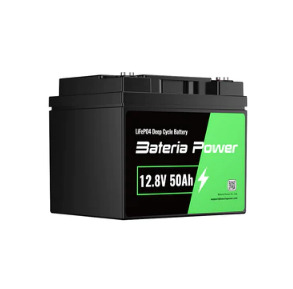
The lightweight nature of lithium batteries is a significant asset when it comes to boating and fishing. Carrying heavy batteries on and off your boat can be physically taxing and increase the risk of accidents. The 12V 50Ah lithium battery is much lighter than traditional alternatives, making it easier to handle and transport. It also contributes to better weight distribution on your boat, improving stability and maneuverability.
Lithium batteries are also environmentally friendly. They contain no hazardous materials like lead or acid, reducing the risk of spills or contamination. Additionally, lithium batteries have a longer lifespan, resulting in fewer discarded batteries in landfills. Choosing a 12v 50ah lithium battery for trolling motor is not only a smart choice for performance but also for reducing your ecological footprint.
When it comes to maintenance, lithium batteries are virtually hassle-free. Unlike lead-acid batteries that require periodic checks and water top-ups, lithium batteries require minimal attention. They are also more resilient to extreme temperatures, making them suitable for various weather conditions, whether you're fishing in scorching summer heat or chilly winter mornings.
In conclusion, the 12V 50Ah lithium battery for trolling motors represents a significant leap forward in the world of angling. Its combination of high energy density, long-lasting performance, rapid charging, and low maintenance requirements make it the preferred choice for both avid anglers and recreational fishermen. With a lithium battery powering your trolling motor, you can enjoy more time on the water, smoother trolling experiences, and the peace of mind that comes with a reliable and efficient energy source. Upgrade your fishing game today and discover the benefits of a 12V 50Ah lithium battery for your trolling motor.
For more information, Visit us:-
Best lifepo4 battery 12v 200Ah
20 mppt solar charge controller
12v 200ah lifepo4 battery
0 notes
Text
How long will a 100Ah Lithium battery power a Trolling Motor?
A 12-volt 100Ah lead acid deep cycled battery could run a 30lbs trolling motor on Speed 4 setting for around 4 hrs.
0 notes
Photo




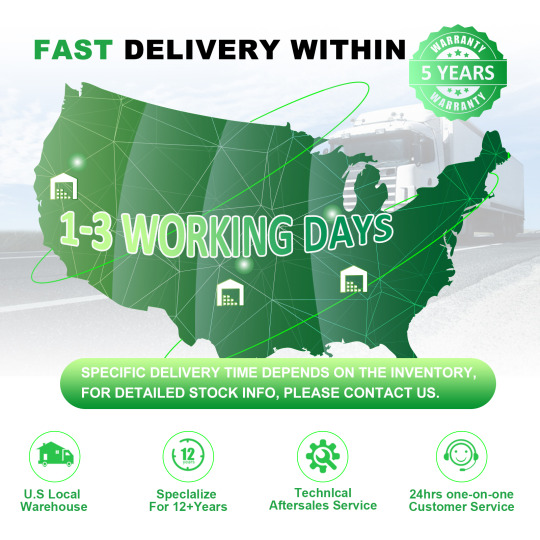

12V LiFePO4 Lithium Battery 100Ah for Trolling Motor,Boat,Golf,Cart,RV,Solar,4000-15000 Deep Cycle Marine Battery,Built in 100A BMS 1280W,10 Years of Life time
1 note
·
View note
Text
Assembling Lithium Ion Battery 12.8V 300Ah For Your Sail Boat! Step By Step!
LiFePO4 batteries have been widely used in our daily lives, such as RV, camping, solar, and wind energy storage. Compared with the lead-acid battery, the LiFePO4 battery can help you stay on the water for a longer time. With high energy density and a longer lifespan, more and more people are likely to upgrade the sailboat battery using LiFePO4 battery.
There are two types of batteries we used in a boat. One is the starting battery, which is used to start the engine, and the other one is the storage battery, which can power the devices on our boat. Our 12V 300Ah is the storage battery. It’s used to power the trolling motor and other accessories.
As a DIYer, I decided to build a 12V 300Ah LiFePO4 battery for my sailboat. I wrote the full prismatic battery pack assembly process down and share it in the following post. Hope it can help you.
*Note: It is recommended that you learn some basic knowledge about LiFePO4 batteries before assembling the battery pack. Keep safe when you are assembling the battery pack.
youtube


Material Used:
3.2V 300Ah LiFePO4 battery cells (4 pieces)
There are currently three common shapes of LiFePO4 batteries: cylindrical, prismatic, and pouch. Different shapes of batteries will have a certain impact on performance. At present, the most suitable battery DIY enthusiasts are the prismatic LiFePO4 batteries, which are very suitable for both performance and operational difficulty.
We recommend you purchase the Grade A battery with a high quality and reliable warranty.
BMS (Battery Manage System, 1 piece)
Connectors (About 4pieces)
Others: EVA cotton, screws, ribbon cable, plastic pipes, etc.
Material Used:
Spot Welder
Spot Welding Pen
Soldering Iron
Wire Cutter
Wire Stripper
Multimeter
Assembly Methods: 4 Series And 1 Parallel
Series(S): The way of connecting the positive and negative electrodes of two different cells is called a series connection. As a result, the voltage of the battery pack will increase while the capacity remains the same.
Parallel(P): where the positive and positive electrodes of two different cells are connected in parallel. The result is that the capacity of the battery pack increases while the voltage remains the same.
Assembly Process
1. Install Signal Acquisition Wires In Sequence
The connecting piece has been connected to the battery cell by laser welding. Laser welding is a process used to join together metals or thermoplastics using a laser beam to form a weld.
Before we connect this group of battery cells, we should use the multimeter to check their voltage of them to ensure consistency. It is better if you have a testing device to check the internal resistance. Without testing the consistency, the battery pack may cause an accident.
Then we place them in order and fix them with fiber tape. (Made of hot melt adhesive and forms a stronger tape that is resistant to tears and has better temperature tolerance than regular tape.)

2. Cut The Signal Line To An Appropriate Length
Tidy up the messy lines, then cut them into an appropriate length.

3. Soldering Signal Lines With Lead-Free Solder
Generally, leaded solder is composed of tin and lead. The advantages of using leaded solder include: being easier to bring to working temperature, being shock resistant, and having fewer internal flaws in the structure after cooling. However, lead material is harmful to the body as it’s readily absorbed. We’d better choose lead-free solder to protect our health and environment.

4. Check The Signal Lines In Correct Order
The wrong sequence may cause BMS to burn out.

5. Put Battery Pack Into Shell And Fill EVA Cotton
EVA cotton can be shockproof, fireproof, and insulated, which can protect the battery cells well.

6. Secure BMS With Thermally Conductive Tape
Thermally conductive tapes are designed to provide preferential heat transfer between heat-generating electronic components and cooling devices such as fans, heat sinks, or heat spreaders. They are also used for the thermal management of high-powered LED’s which can run at high temperatures, thus increasing the efficiency and reliability of the system.

7. Connect B- Of BMS To Negative Of The Battery Pack
A BMS is one of the most important elements in a LiFePO4 battery, like the brain of the battery pack. It calculates the State of Charge (the amount of energy remaining in the battery) by tracking how much energy goes in and out of the battery pack and by monitoring cell voltages, which can prevent the battery pack from overcharging, over-discharging, and balancing all the cells voltage equally.
There are two main sets of wires we need to install, the thick wires and the thin wires. The thick wires are your charging/discharging wires and the thin wires are your balance wires. Not every BMS is the same, but most are similar. Your BMS will likely have 3 thick wires or 3 pads to solder on your own heavy gauge wires. These are the B-, P-, and C- wires (or pads for adding wires). We usually start with the B- wire. We can connect the B- of BMS to the negative pole of the battery pack.

8. Connect The Positive And Negative Power Line To The Cap

9. Plug Signal Acquisition Wires’ Port Into Interface

Battery Tests
1. Test Voltage Of The Battery Pack
In this step, we can use a multimeter to check the voltage of the whole battery pack. Attach the multimeter probes to the positive and negative battery terminals. Then we can check the voltage on the screen. The multimeter’s red probe must be connected to the positive terminal, while the black probe must be connected to the negative one.
A fully-charged battery must indicate a slightly higher voltage than the voltage listed on the battery. For instance, a 12 volts battery will indicate about 12.8 volts when it is fully charged.

2. Charging Test
The battery capacity, or the amount of energy a battery can hold, can be measured with a battery analyzer. If you’re doing a capacity test, be sure to charge the battery until the battery reaches 100%. Then discharge the device until the battery is fully depleted. The charge and discharge rates of a battery are governed by C-rates. The capacity of a battery is commonly rated at 1C, meaning that a fully charged battery rated at 300Ah should provide 300A for one hour.

3. Discharging Test
The discharging test of the battery is very helpful to the battery cycle life and discharge performance evaluation. We can use a professional device(Such as a Programmable DC Electronic Load) to check whether the battery works well or not during the discharging process, which can protect our battery and devices for further daily use.
When testing, there are three factors we need to pay attention to the port voltage of the battery, the resistance of the wire between the battery and the electronic load, and the temperature of the battery.

Summary
Thanks for reading the post about assembling the 12.8V 300Ah LiFePO4 battery! It is not hard for us to build a LiFePO4 battery. Would you like to have a try?
0 notes
Text
Epoch Batteries - Lithium Marine & Trolling Motor Battery
youtube
1 note
·
View note